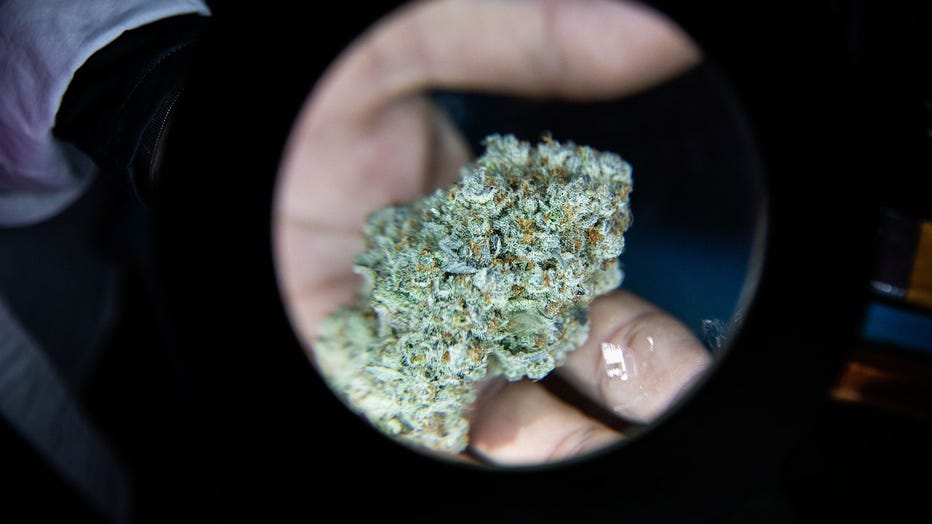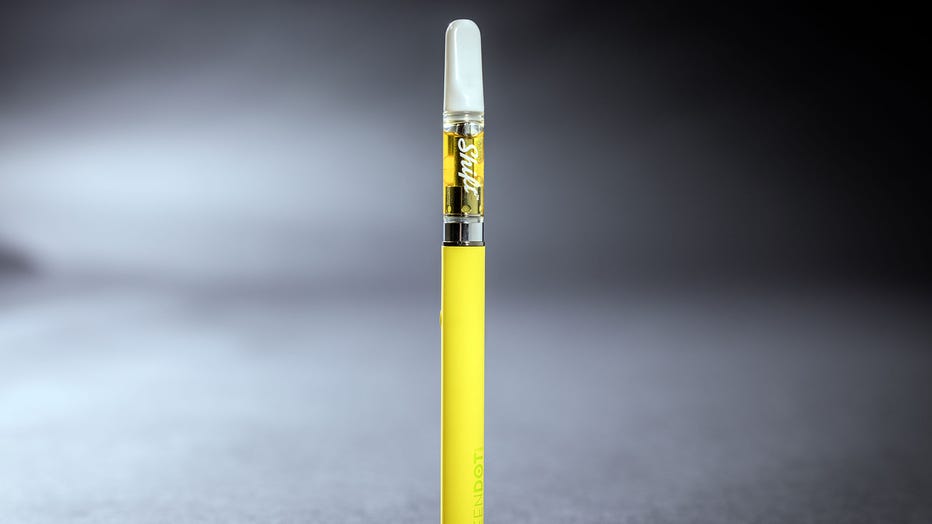Cannabis hyperemesis syndrome: Marijuana-linked condition on the rise
Demand for high-potency marijuana causing concerns
Cary Quashen, Owner of Action Family Counseling, joins LiveNOW's Austin Westfall to dive deep into concerns over the rising demand for high-potency marijuana.
As marijuana use becomes more prevalent, a severe illness linked to frequent cannabis use is also on the rise.
Cannabinoid (or Cannabis) hyperemesis syndrome, also known as CHS, is an often debilitating condition that affects a small but growing number of chronic marijuana users.
People with CHS experience severe nausea and vomiting, in some cases 20-24 times a day. It can last days or even weeks and is hard to control – often the only thing that brings relief is a hot shower or bath.
RELATED: Frequent marijuana use linked to increase in heart attack and stroke risk
Signs of cannabis hyperemesis syndrome
In National Library of Medicine literature, doctors outlined the following criteria for diagnosing CHS:
- Long-term cannabis use (often daily)
- Cyclic nausea and vomiting
- Relief when stopping marijuana
- Hot showers/baths relieve symptoms
- Abdominal pain
RELATED: Teen use of delta-8, an unregulated marijuana alternative, is rising
Ironically, marijuana is often used to treat two key symptoms of CHS: Recent data compiled by the U.S. Food and Drug Administration concluded there is "credible scientific support" for the use of marijuana to treat pain, anorexia, nausea and vomiting.

Doctors are seeing a rise in serious illness linked to heavy marijuana use (Photo by Lauren DeCicca/Getty Images)
Three cycles of cannabis hyperemesis syndrome
There are three phases of CHS, according to Connecticut state’s Adult Cannabis Use website:
- Prodromal – Nausea and vomiting following long-term cannabis use. This often leads to a person using more cannabis to reduce nausea.
- Hyperemetic – Triggered by increased cannabis use, nausea, abdominal pains and vomiting increase
- Recovery – Once a person stops using cannabis, symptoms may take several weeks to decrease and disappear until they begin using again, which starts the cycle over.
What causes cannabis hyperemesis syndrome?
Researchers are still early in their exploration of what causes CHS. Dr. Sushrut Jangi, a gastroenterologist at Tufts Medical Center, told The Boston Globe it has something to do with the "somewhat mysterious" endocannabinoid system, which regulates critical bodily functions like sleep, mood, pain control, immune response, appetite and more.
READ MORE: Michigan dog attacks, nearly kills owner after being fed THC gummy
A lot of receptors in the brain and the gut bind to THC, the substance in cannabis that makes people feel high. Those receptors evolve after long-term cannabis use, Jangi told The Globe.
Jangi said although it’s hard to calculate, he estimates somewhere between 5% and 20% of chronic marijuana users will experience CHS.
According to the National Library of Medicine, after Colorado legalized recreational marijuana, ER visits for cyclic vomiting nearly doubled.
Marijuana use at an all-time high
U.S. moves to reclassify marijuana, ease restrictions
The Biden administration is moving to reclassify marijuana as a less dangerous drug. The move would lift some restrictions on studying the drug. Presently, scientists have to register with the DEA and get both a state and federal license to do any research. Morgan Fox, political director for NORML, joins LiveNOW from FOX.
A survey published in May showed that for the first time, the amount of daily marijuana users has surpassed the number of daily alcohol users in the U.S.
In 2022, an estimated 17.7 million people reported using marijuana daily or near-daily, compared to 14.7 million who drank that often, according to national survey data. This marks a significant increase from 1992, when less than 1 million reported near-daily marijuana use.
The Justice Department has formally moved to reclassify marijuana as a less dangerous drug, acknowledging it has less potential for abuse than more harmful drugs like heroin, LSD, quaaludes, ecstasy and other drugs considered Schedule I substances.
RELATED: Marijuana will be rescheduled as less dangerous drug
If the rule change becomes law, marijuana will be moved from a Schedule I to a Schedule III, alongside ketamine and some anabolic steroids.
Is marijuana addictive?
Marijuana use disorder – or the continued use of marijuana despite negative impacts on one’s life – is real, but the chances of it having major negative consequences are much lower than that of other drugs, according to data shared by the FDA.
In 2021, roughly 30% of people who reported using marijuana for non-medical purposes met the criteria for marijuana use disorder, with about 5% of those considered severe substance use disorder. For heroin users, that number jumps to 81%.

A live resin vape cartridge arranged in Denver, Colorado, US, on Monday, July 24, 2023. Photographer: Chet Strange/Bloomberg via Getty Images
The prevalence of abuse and use disorders decreases the older people get, according to FDA data.
Marijuana withdrawal symptoms
The Canadian government’s website says regular users who decide to quit cannabis may experience the following withdrawal symptoms when they stop:
- Feeling nervous, angry, and depressed
- Finding it hard to relax
- Feeling tired
- Trouble sleeping
- Trouble concentrating
- Chills and shaking
- Sweating (especially at night)
- Headaches
- Stomach pains
- Loss of appetite
FOX’s Austin Williams and Stephanie Weaver contributed to this report.

